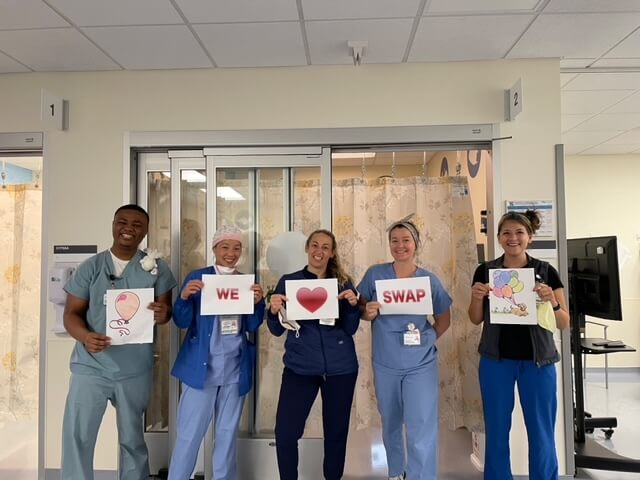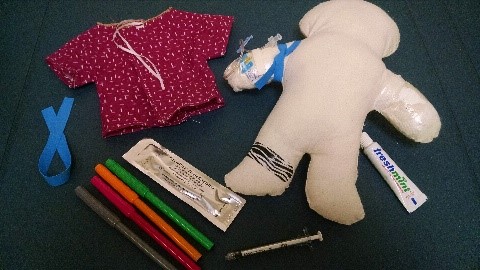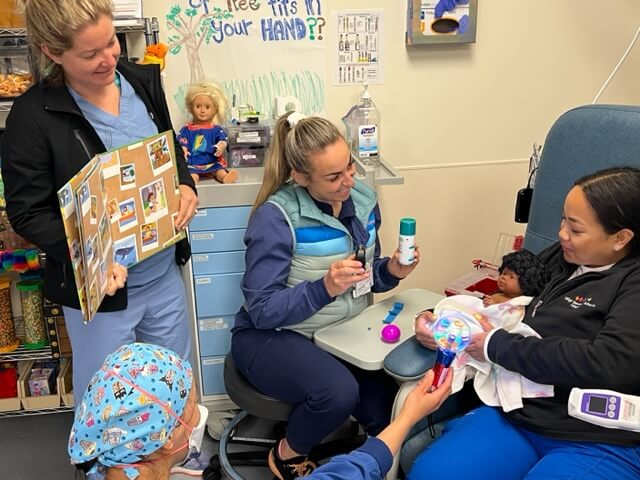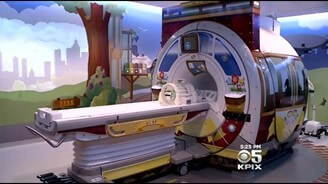Pediatric Imaging Without Anesthesia at UCSF is Highly Successful and Cost-Saving
In pediatric imaging, anesthesia is commonly thought to be necessary for obtaining high-quality diagnostic imaging, but an innovative program at the University of California, San Francisco (UCSF) is challenging that idea. The Scan Without Anesthesia Program (SWAP) is a collaborative effort by clinicians, radiographic technologists, nurses and Child Life Specialists to prepare children for successful imaging without anesthesia.

Anesthesia use can come with risk, particularly in the pediatric population. Additionally, the use of anesthesia lengthens the imaging appointment, can increase costs and requires additional cross-department coordination. SWAP aims to address these challenges for UCSF pediatric patients.
"It's been a very successful program, and we get a lot of good feedback from families about it," says Lauren Meyer, a Child Life Specialist at UCSF. "A lot of families have concerns about anesthesia or want an alternative, so it's huge for providers to be able to offer SWAP to families."
Preparation for the scan starts about a week ahead of time. A Child Life Specialist calls the family and walks the parents through the process — what to expect, what supports will be available, what aspects may be particularly challenging for the child and how to cope. Child Life can also provide kid-friendly preparation books, show the family around the scan suites ahead of time and give guidance on practicing at home.
"Some kids get really into practicing, they'll practice staying still and hearing the sounds," says Meyer. "For some parents, too, watching their kid practice helps them feel confident, which is also huge predictor for success. Typically, calm, confident parents are going to have a calm, confident kids."
On the day of the scan, Child Life Specialists meet the patient in the waiting room and offer support throughout the appointment, from sitting with the patient during IV placement to ensuring the patient has equipment like movie goggles or music.

Collaboration is critical for SWAP's success. Technologists use child-friendly language to communicate with and comfort young patients. Nurses use innovative techniques, including a small buzzing bee toy, to help distract from uncomfortable moments like placement of the IV.
"The process is very customized for each patient and their family," says Jordan Kaitz, RN, an Interim Nurse Supervisor at UCSF Health Radiology Mission Bay. "Some families have very specific requests for
what they want. We ask all those questions ahead of time so that we don't do something that they wouldn't want."

Patients are recommended for SWAP at the time of the imaging request. The patients are usually 5 years old or older, but infants can be good candidates for "feed-and-swaddle" to help them sleep through the scan without anesthesia.
"I'm excited to watch SWAP continue to grow," says Kaitz. "It's a hard thing to wrap your head around, that we can actually do scans successfully without anesthesia. We're planting the seed and getting the word out to more providers that it's a great thing we can try."
In 2023, a team of researchers from UCSF and the University of California, Berkeley, published findings on the factors for success and the labor cost savings associated with SWAP. The investigators, led by first author Joshua Vic Chen, BA, and senior author Yi Li, MD, published "Factors and Labor Cost Savings Associated with Successful Pediatric Imaging without Anesthesia: a Single-Institution Study" in Abdominal Radiology.
The researchers conducted a retrospective chart review of patients who participated in SWAP between 2019 and 2022, and the findings show a remarkable 95% success rate. Of the 731 patients that participated in SWAP, 698 had successful scans. Estimated labor cost savings of SWAP equals $139,367.80 per year.
"We hope that this analysis will help to promote the creation of similar programs in hospitals across the country," write the authors. Future areas of research include analyzing indirect cost savings through increased imaging efficiency.

Mr. Chen is a student at the UCSF School of Medicine. Dr. Li is an assistant professor at UCSF Radiology and the director of the Neuroradiology Fellowship Program. Additional authors from UCSF Radiology include Matthew Zapala, MD, PhD, Alice Zhou, MD, Lauren Meyer, MA, Mikaela Demartini Smith, MA, Chloe Kelleher, MA, Orit Glenn, MD, and Jesse Courtier, MD. Nola Vu, BA, is a student at the UC Berkeley School of Public Health.
Read more research and news from UCSF Radiology.
